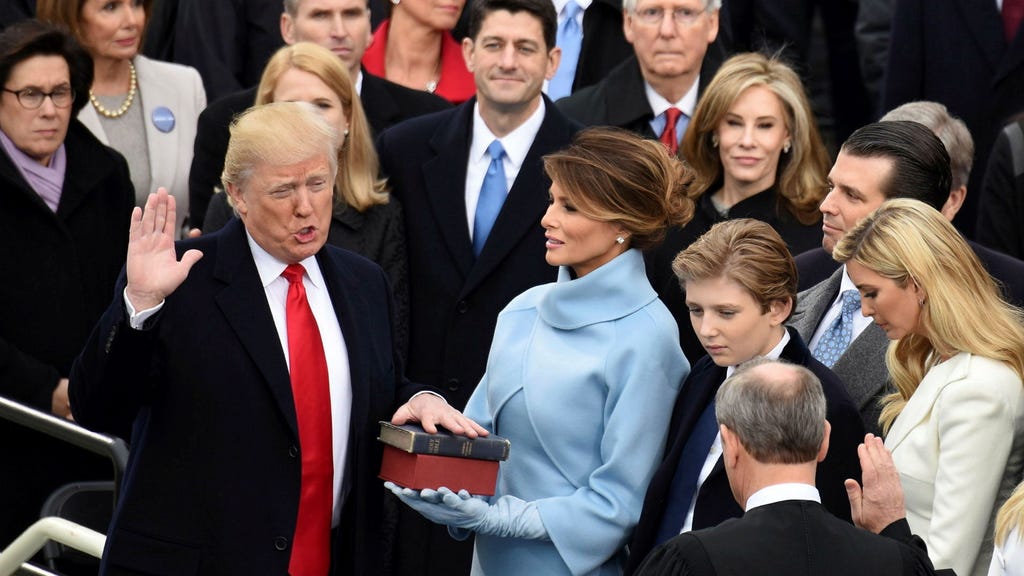The inauguration of Donald Trump in 2017 marked a significant turning point in American political discourse, particularly concerning the relationship between truth, falsehood, and public perception. Trump’s claim that his inauguration had the largest audience in history, despite clear evidence to the contrary, signaled a new era where the repetition of a lie, regardless of its veracity, could effectively shape public belief. This phenomenon, often referred to as the ”illusory truth effect,” leverages the psychological tendency for repeated exposure to information, even false information, to increase its perceived credibility. The constant reiteration of a claim, especially by authority figures or within echo chambers, can create a false sense of familiarity and acceptance, blurring the lines between fact and fiction.
Trump’s inauguration crowd size claim became a potent symbol of this shift. The verifiable photographic and video evidence clearly contradicted his assertion. Yet, the continuous repetition of the claim, both by Trump himself and by supportive media outlets, created a narrative that resonated with a segment of the population. This incident highlighted the vulnerability of public discourse to manipulation in the age of information overload and the fragmentation of media sources. It also exposed the limitations of fact-checking and debunking in the face of a sustained campaign of misinformation. The traditional methods of verifying information and correcting falsehoods struggled to keep pace with the rapid spread of the alternative narrative. This event underscored the importance of media literacy and critical thinking skills in navigating the increasingly complex information landscape.
The implications of this ”post-truth” era extend far beyond the specific incident of the inauguration crowd size. It signals a broader erosion of trust in traditional sources of information and a rise in the acceptance of alternative narratives, often fueled by partisan biases and emotional appeals. This phenomenon is amplified by the echo chambers created by social media algorithms, where individuals are primarily exposed to information that confirms their existing beliefs. The constant reinforcement of these beliefs, regardless of their factual basis, solidifies them and makes them resistant to correction. This creates a polarized information environment where shared understanding and reasoned debate become increasingly difficult.
The dangers of this trend are manifold. The normalization of falsehoods erodes the foundation of democratic discourse, which relies on a shared understanding of facts and evidence. It can also lead to the erosion of trust in institutions, including the media, science, and government. When facts become subjective and open to interpretation based on political or ideological leanings, it becomes challenging to address complex societal problems effectively. Decision-making based on misinformation can have serious consequences, ranging from public health crises to political instability.
The rise of misinformation and disinformation also poses a significant threat to public health. The spread of false information about vaccines, for instance, has contributed to declining vaccination rates and the resurgence of preventable diseases. Similarly, the dissemination of misinformation during the COVID-19 pandemic hampered efforts to control the virus and led to confusion and distrust in public health guidance. The rapid spread of false cures and conspiracy theories through social media platforms underscored the urgent need for effective strategies to combat misinformation and promote accurate health information.
Combating the spread of misinformation and reinforcing the importance of truth and factual accuracy requires a multi-pronged approach. Strengthening media literacy education is crucial to equip individuals with the critical thinking skills necessary to discern credible sources of information from unreliable ones. Fact-checking organizations play a vital role in debunking false claims and providing accurate information, but their effectiveness is limited by the sheer volume of misinformation and the speed at which it spreads. Social media platforms have a responsibility to address the spread of misinformation on their platforms, but finding the right balance between content moderation and free speech remains a complex challenge. Ultimately, addressing the root causes of the ”post-truth” era requires a collective effort from individuals, institutions, and technology companies to foster a more informed and discerning public discourse. This includes promoting critical thinking, supporting independent journalism, and holding individuals and organizations accountable for spreading misinformation.














